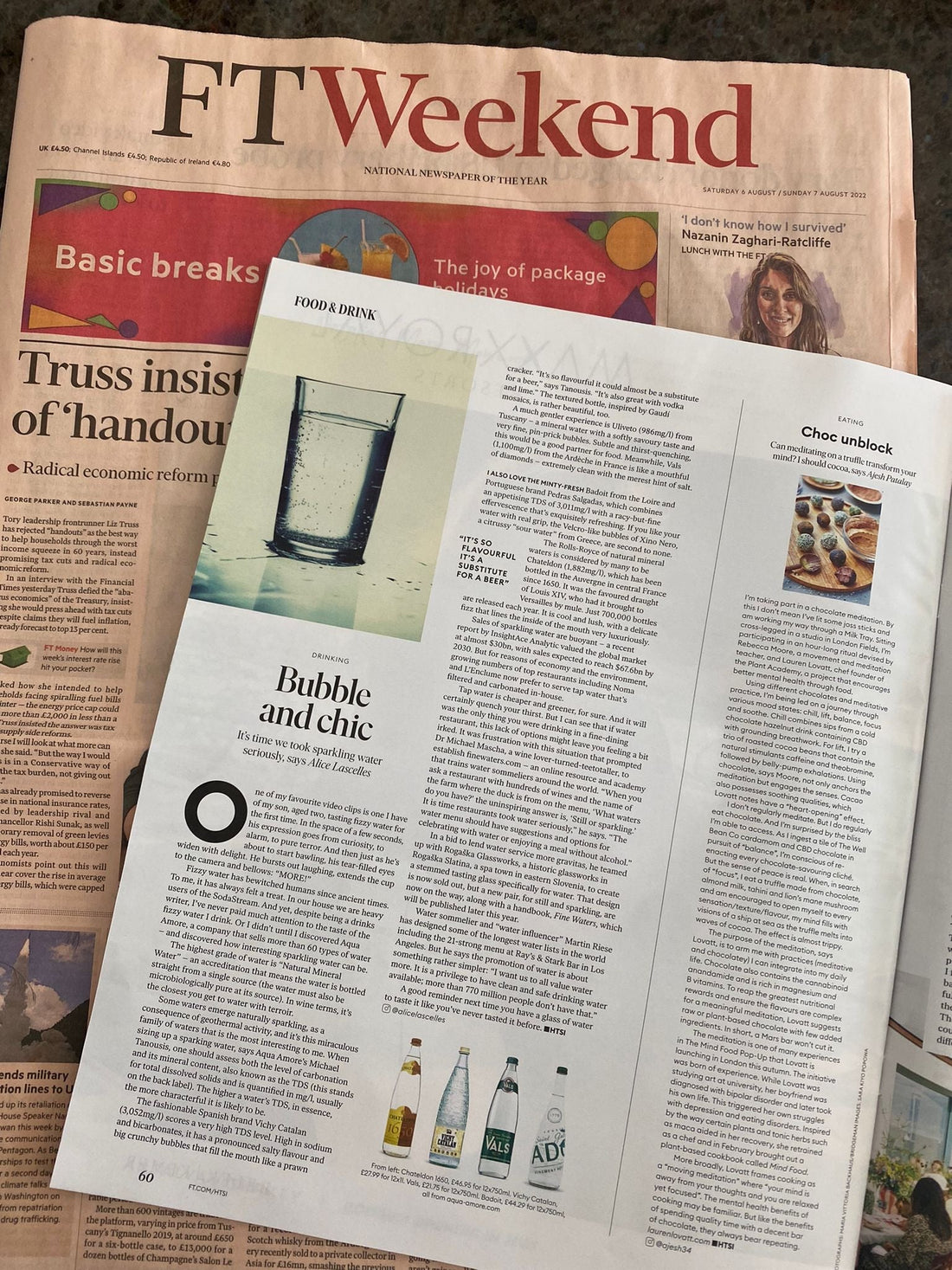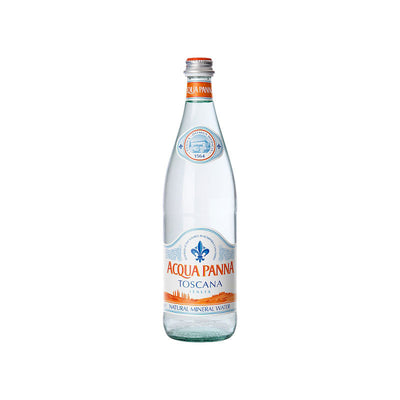
Aqua Amore and Alice Lascelles: Why Natural Mineral Waters Deserve More Attention

The FT Weekend is quite a substantial tome, and periodically the HTSI (previously ‘How To Spend It’) supplement offers anyone with a taste of the finer things to delve into the possibilities offered by the high life.
I was therefore delighted to have had forwarded to me an enquiry from Alice Lascelles, the well-respected Drinks Editor for the FT; she was curious about experiencing ‘Naturally Sparkling mineral waters’ for a column. Her questions?
- Which are the good ones?
- Why do they taste different?
- What are the considerations when choosing one?
She suggested an interview, so I gave her a call and she was ready to record the call there and then.
A little taken aback, I had to think on my feet… how does one best approach this topic to answer Alice’s questions and also ensure that the message is conveyed in a meaningful way to her educated audience?
Firstly, the hierarchy of bottled waters needed to be clarified and, obligingly, this was dutifully relayed in Alice’s third paragraph (once the fact-checkers had checked their facts). As Natural Mineral Waters are the most highly regulated foodstuff in the EU (the UK’s regs are harmonised post-Brexit), a walk-through the qualifying criteria is fundamental. Additionally, since all the waters that Alice would be tasting were Natural Mineral Waters (as opposed to ‘Spring Water’ or ‘Table Water’), it was important to outline this key differentiation to the product.
What makes a natural mineral water distinct? A quick run-down:
- Mineral composition has to be stable at source, i.e. some allowable +/- in mineral content is permissible, but within established parameters
- Microbiologically pure at source
- Bottled at source
- From a single source
- The label has to indicate the source as the most prominent feature n.b. the spirit of the regulations is to ensure that the customer knows that this is a water of provenance rather than a brand
- Limited permissible treatments to the water, i.e. removal of iron
As a note on the labelling, ‘Spring Water’ can be prefaced to say, ‘Natural Spring Water’ or ‘Organic Spring Water’. ‘Table Water’ doesn’t even have to be labelled as such! Therefore, it can be ‘Artesian Water’ or ‘Volcanic’, etc… Is it any surprise that we’re all apathetic when it comes to understanding what it’s all about?
Secondly, I covered the nature of water itself; it’s a solvent and absorbs minerals from the earth. Alice refers to ‘geothermal activity’ in paragraph four – some water routes so deeply underground that it is heated by the earth’s crust; it dissolves limestone, which becomes CO2 – hence, the appearance of geothermal, naturally carbonated waters from a spring. Note, not all naturally carbonated waters are geothermal. As they are generally warm/hot (Vichy Catalan emerges from the spring at 59°C, for example), water becomes keener to absorb minerals than at lower temperatures, so this class of waters is generally mineral-rich (a term also regulated to indicate>1,500 milligrams per litre).
Thirdly, Alice allowed me to opine on the significance of the mineral sales in water, which is key in understanding why Natural Mineral Water sources are protected. The fact is that the naturally acquired mineral salts in water are the most bioavailable to human physiology of any foodstuff (for example, calcium from water is absorbed more readily than calcium sourced from milk or cheese). This is significant as minerals affect our well-being – magnesium, sulphates, calcium, bicarbonates, and even lithium can be found in water, amongst others! It is for this reason that people want assurances that their source of hydration and nutrition remains consistent – that’s right, people turn to mineral water for reasons of wellness and for their curative properties, and have always done so since time immemorial.
A note on the mineral content – mineral content within water is measured in milligrams per litre (mg/L). This is determined by boiling one litre of water at 180°C until the liquid evaporates and measuring the weight of the remaining mineral salts. The total weight is referred to as ‘Total Dissolved Solids’ or TDS. It can also be referred to as ‘Dry Residue’.
Finally, we touched on the ‘organoleptic’ experience of the waters – why such an unusual word? Well, ‘taste’ is a loaded term as one then looks for properties that a water doesn’t commonly deliver. Of course, Alice picked up on the saltiness of Vichy Catalan in the article and rightly so – there is a good chunk of sodium (not table salt!) within each litre (mineral salts are measured in milligrams). Mineral salts also alter the texture of a water; hence people can be disappointed when looking for flavour. Alice did comment on the variability of the carbonation, from “big crunchy bubbles” to “very fine, pin-prick bubbles”.
So, there’s my four-step guide on how to introduce the esoteric topic of mineral waters to a curious and enthusiastic drinks journalist – I hope that you enjoyed the experience, Alice!
If you too would like to sample the very same variety of waters that Alice did, we’re delighted to offer a special edition selection Discovery Box, found here. This case features 12 bottles of naturally sparkling water from a unique selection, curated specially for the FT. My advice is to chill them first (as this is how most people consume them) and do try share your thoughts with us!

Yours,
Michael


